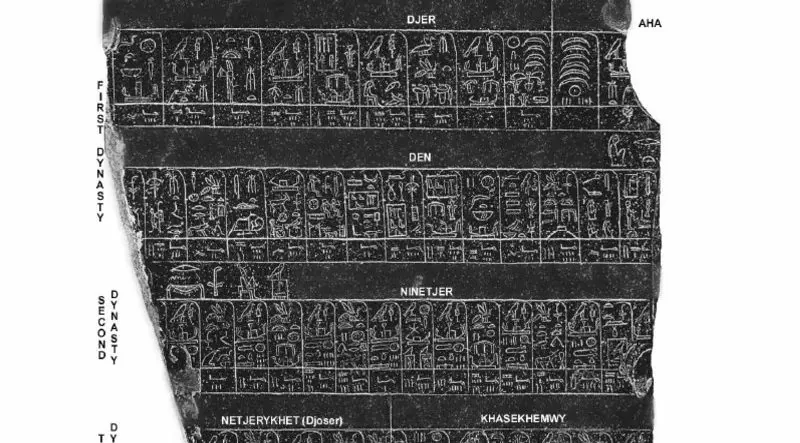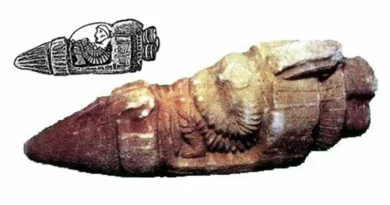The Palermo stone and the ancient astronauts
A longevity of the alien gods
The Palermo Stone is considered as an artifact that has revealed much about the ancient Egyptian predynastic rulers. The Palermo Stone could also be evidence of the presence of Ancient Astronauts, or the Ancient Astronaut declined to rule Egypt in a remote past.
Although the theory of these ancient visitors remains a controversial issue, and many people are against this concept, some ancient texts, like what is written on the Palermo Stone, it could be the ultimate proof that we have sought for so long. The Palermo Stone, commonly known as the Royal Annals, is one of the most important sources for the study of ancient Egyptian civilization, and its long history on Earth.
The stone got its name from the Archaeological Museum of Palermo in Sicily, where in fact it hosted one of the largest fragments. Other parts of this important piece of ancient Egyptian history, are in the Egyptian Museum in Cairo, and the Petrie Museum in London. The stone is not in perfect condition since only a few fragments have been recovered, and most of these are very damaged.
While the exact date of the Palermo Stone creation remains a mystery for scholars dating more likely the realization of the stele is half of the Fifth Dynasty that ruled between 2500 BC and 2350 BC, during the period of Egyptian history known as Old Kingdom. The original location of the stele is unknown, but it is assumed that it has been found to Eliopoli or in the ruins of the temple of Ptah in Memphis.
The most controversial part of the Palermo Stone are the predynastic kings, who were labeled as mythological beings from traditional scholars. The document, in hieroglyphic writing, is 120 predynastic kings who ruled before that the ancient Egyptians, and existed officially as a civilization.
Interestingly, the names of the mysterious “gods” and “demigods” also appear in the Egyptian royal genealogies. The similarities between the Palermo Stone, the Turin Royal Canon and Sumerian King (list of Sumerian Kings) are fascinating, since all three cite a time when the ‘gods’ have lived on Earth and ruled for hundreds and even thousands of years.
No coincidence … it was proposed to re-read the duration of the reigns of the anti-diluvian Sumerian kings in more realistic numbers, transforming the dates sars (1 sar = 3600 years) in simple years or decades. No coincidence that the 3600 number we find him in the orbital period of Nibiru.
The Palermo stone was written on black basalt and it is believed that it originally had a length of about 2 meters and a height of 60 centimeters. Unfortunately, its importance was not immediately recognized, to the point that the most important piece of the rock was once used as a front door. The Palermo stone helped the researchers to conclude that the ancient Egyptians had developed a technology top to melt the copper, which ultimately allowed them to create incredible copper statues as early as the second dynasty.
In it there is also the construction of the first building stone during the reign of Neka, which precedes the Djoser pyramid. Stone of Palermo in 1760
As you can see, there are many ancient texts that describe very precisely a time when beings, perhaps misunderstood as gods, have come down from heaven and rule mankind.
As you can see, there are many ancient texts that describe with great accuracy a time when beings, perhaps misunderstood as Gods, came down from heaven to rule mankind. This is why many might interpret the Palermo stone as one of the most incredible and important ancient texts, such a document could represent proof, i.e., a time when “otherworldly beings” ruled the planet.
If you liked the article, share it. Cesare Valocchia





